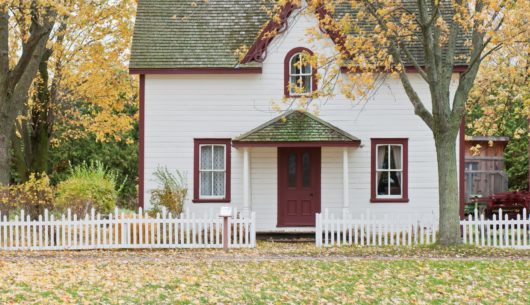Blog
Small energy-efficient houses up to 100m2 – advantages, construction cost
Table of contents
- A small energy-efficient house – advantages
- Cost and time of implementation – energy-efficient house from A to Z
- Quick summary
More and more people are coming to the conclusion that building a house of impressive size does not make sense if we do not have a large family. Living in a block of flats is also not the most pleasant, so small energy-efficient houses seem to be the most reasonable alternative. 
However, it is worth doing some research on how much it costs to build such a property, how much time it will take us or what advantages energy-efficient houses have. Today we will focus on small facilities below 100 m2. See for yourself that a house can be built quickly, cheaply and professionally.
A small energy-efficient house – advantages
When we talk about the combination of ecology and economy, we immediately think of energy-efficient equipment and real estate. Although accessories such as solar panels and photovoltaic panels are becoming more and more popular, an energy-efficient house is above all an intelligent, well-thought-out and well-invested project. If you need help in choosing materials and the necessary assortment, it is worth contacting Tadeks. It specializes in energy-efficient construction, and its offer also includes, m.in, houses: passive houses, zero-energy houses, biological houses.
The cost of energy-efficient components is likely to pay for itself after the first few seasons. Later, it will only start generating additional savings to the household budget.
A small house also means a low demand for heat. Heating all rooms will be easier and faster, because you will get the right temperature in each room, without having to cool down rarely used parts of the building. As you can see, comfort is a plus, and the bills will be lower.
The small space is also convenient to keep clean. Cleaning, vacuuming and dusting is efficient, does not take too much time and energy. Tenants will probably quickly appreciate this fact when they have to take care of the interior and equipment during renovation and finishing.
Cost and time of implementation – energy-efficient house from A to Z
When planning the budget, we need to answer the question: how much do small energy-efficient houses cost? Of course, the designs depend on the degree of complexity, but architects spend much less time working on a small area than on impressive multi-storey buildings.
Now that you know the parameters of your dream house, the only thing left to do is to choose the construction technology. You can choose between classic brick construction and the use of prefabricated elements. Which option is better? Although most customers choose the first option, a more reasonable solution is to invest in houses produced in a factory. Why? Because they take about 30% less time to construct and are much cheaper to build. Thanks to the fact that the structure is built in a factory, weather conditions are not a problem and are not a reason to stop work. Ready-made prefabricated elements are joined only on the construction site, which will not take too much time with a small area.
Is the construction period longer for energy-efficient houses? Well, no. It is the same as in classic construction, because the main difference lies in the materials used. Of course, we distinguish between zero-energy houses, passive houses, etc. However, taking into account the size of the property and the available technology, a small single-family house can be built in a few weeks – e.g. thanks to the above-mentioned prefabricated elements.
Quick summary
As you can see, energy-efficient houses up to 100m2 are able to offer us:
fast delivery time,
low construction costs,
convenience of use,
generating savings,
reliability
Satisfaction.
So is it worth continuing to think about the investment? Taking into account the above-mentioned information, a small energy-efficient single-family house is currently the best alternative for people who are not planning a large family and want to settle down in a comfortable place tailored to individual expectations. Don’t wait and look for a team that will help you make your dreams come true now.